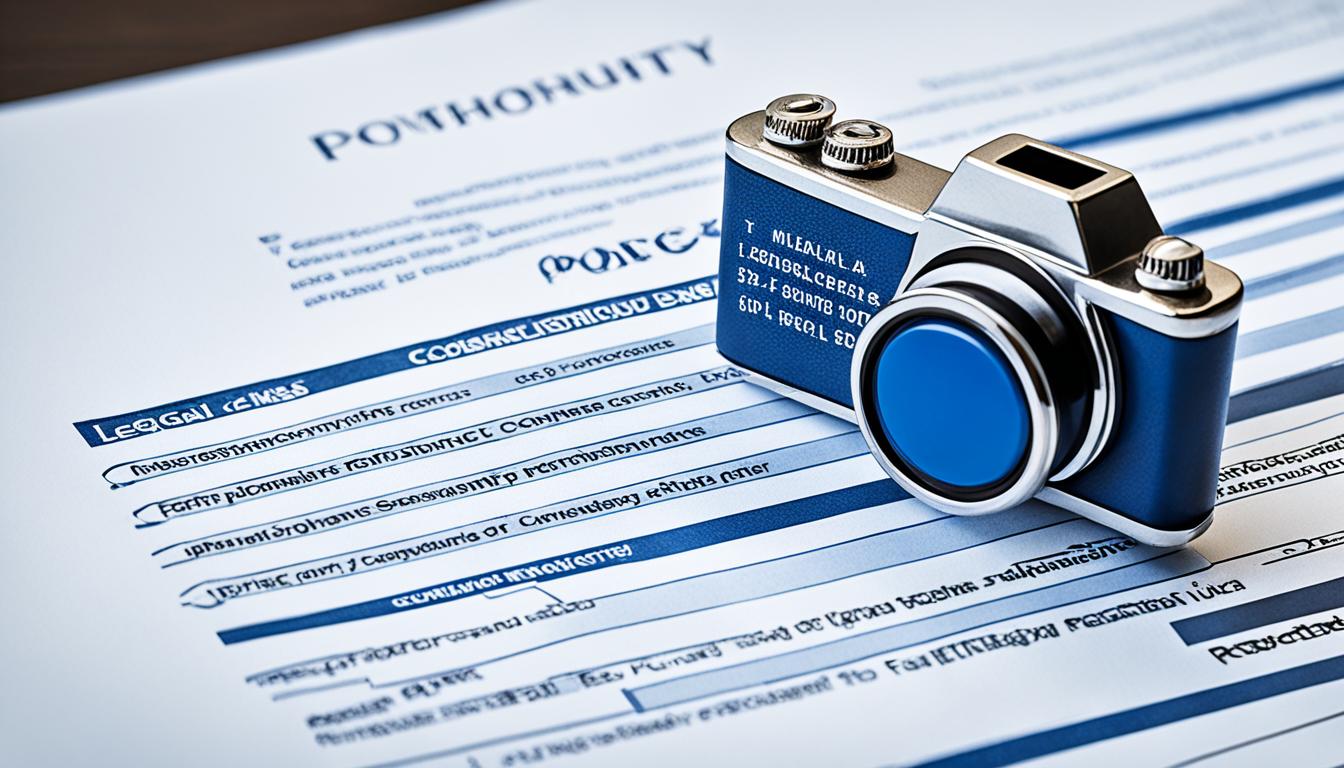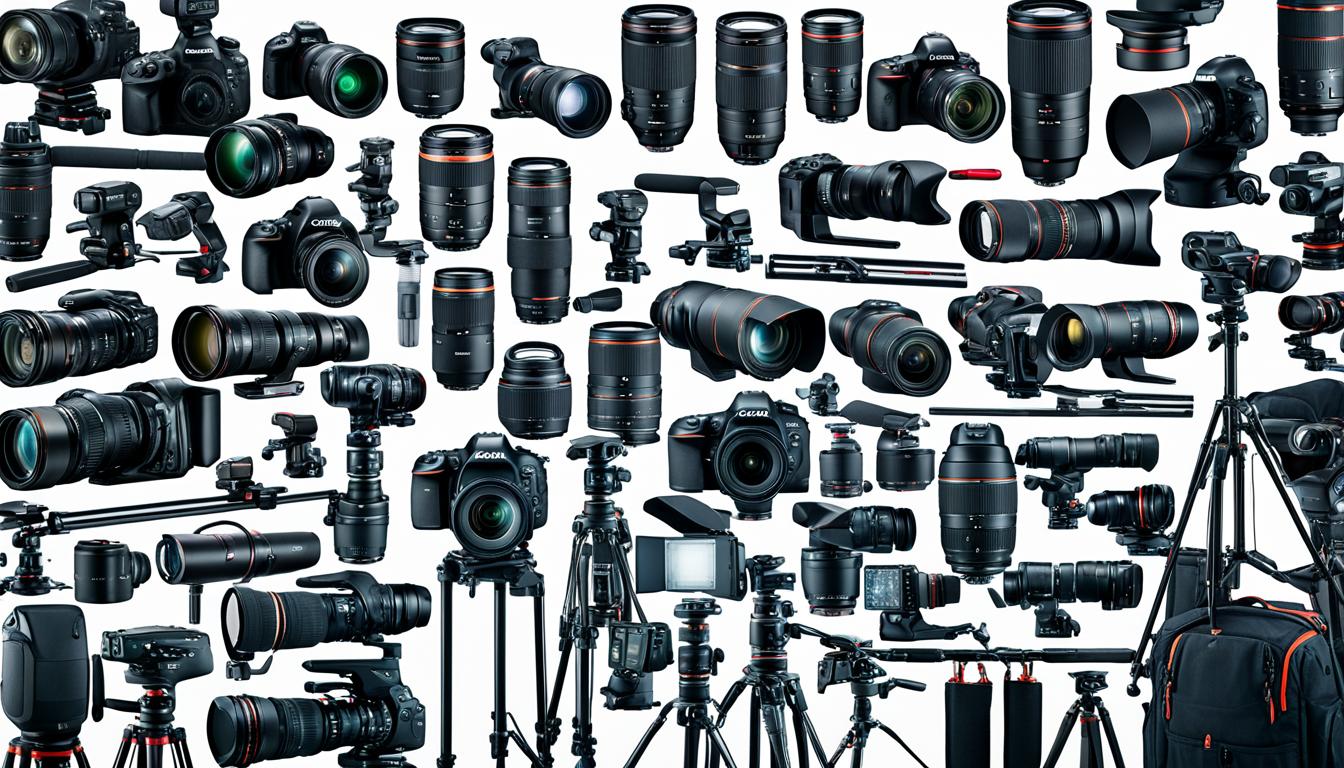Understanding the legal aspects of event photography is essential for both beginners and established photographers. From protecting your work through contracts to navigating copyright laws, knowing your rights is crucial.
In this guide, we will delve into the legalities surrounding event photography, including the importance of photography contracts and copyright law. We will also explore how copyright registration and watermarking can safeguard your work.
Whether you’re shooting weddings, corporate events, or concerts, knowing the legal landscape will empower you to protect your work and ensure that your creative rights are respected.
Key Takeaways:
- Photographers must understand copyright laws and how they apply to their work.
- Using contracts is essential to protect your rights as a photographer and establish clear terms with clients.
- Copyright registration provides added benefits and can help in cases of infringement.
- Watermarking your photos can act as a deterrent against image theft.
- In case of infringement, you have legal options to protect your rights and seek damages.
Copyright Law for Photographers
Copyright law plays a pivotal role in protecting the rights of photographers. When you capture a photo, you automatically obtain ownership and exclusive rights to reproduce, distribute, display, and create derivative works based on your photography. This means that others cannot use your images without your permission.
In photography, copyright protection is inherent, meaning it is granted to you as soon as you create the work. However, there are steps you can take to reinforce your rights and ensure proper recognition for your work.
Photography Copyrights
Photography copyrights affirm your ownership and control over your images. While it is not mandatory to include a copyright notice on your photos, it is a recommended practice. Adding a simple copyright notice, such as “© [Your Name] [Year],” can serve as a reminder to others that your work is protected.
Image: A copyright notice can provide added protection for your photos.
Work-Made-for-Hire
Although copyright ownership typically rests with the photographer, there are instances where the rights may belong to someone else. The “work-made-for-hire” category is an exception to copyright ownership. It occurs when you create photographs as an employee or under a contractual agreement that specifies the work as “work-made-for-hire.” In these situations, the employer or the contracting party owns the copyright instead of the photographer.
It is essential to clarify copyright ownership and usage rights in contracts to avoid any ambiguity or disputes. This ensures that you retain control over your work and can benefit from its use.
“Don’t overlook the significance of copyright when it comes to your photography. Understanding your rights and taking appropriate measures to protect them will empower you as a photographer.”
In the next section, we will explore the benefits of copyright registration and additional steps you can take to safeguard your photography.
Copyright Registration and Protection
While copyright protection applies automatically, it is beneficial to register your photography with the U.S. Copyright Office for additional advantages. Although registration is voluntary, it provides essential benefits if you ever need to take legal action against infringement.
Without copyright registration, you may only be entitled to “actual damages” instead of “statutory damages” in the event of infringement. Statutory damages are often more substantial as they are determined by the court and can range from $750 to $30,000 per work infringed. If the infringement is found to be willful, the damages can be even higher, up to $150,000 per work. Registering your photography strengthens your case to claim statutory damages, making it a crucial step in protecting your rights and potential earnings.
Furthermore, copyright registration establishes a public record of your ownership, making it easier to prove your rights in court. In case of infringement, it also enables you to seek attorney’s fees and costs from the infringing party.
Statutory Damages vs. Actual Damages
Statutory damages, which can be claimed if your photography is registered, are predetermined amounts established by copyright law and can be significant. On the other hand, actual damages only cover the proven financial losses you suffered due to the infringement.
Registering your photography with the U.S. Copyright Office is a straightforward process. You can submit an application online at the U.S. Copyright Office’s website and pay the required fee. It’s important to note that you can register multiple photographs together as a collection, saving time and money.
The Benefits of Copyright Registration
- Allows you to claim statutory damages, which can be significantly higher than actual damages
- Provides a public record of ownership
- Facilitates the pursuit of attorney’s fees and costs from infringers
- Strengthens your case in legal proceedings
Registering your work with the U.S. Copyright Office helps ensure that your photography is well-protected and strengthens your position if you ever need to enforce your rights. It is a valuable step that enhances the legal safeguards and establishes your ownership rights in a clear and undeniable manner.
| Benefits of Copyright Registration | Registered Photography | Unregistered Photography |
|---|---|---|
| Eligibility to claim statutory damages | Yes | No |
| Establishment of public record of ownership | Yes | No |
| Pursuit of attorney’s fees and costs from infringers | Yes | No |
| Enhanced strength in legal proceedings | Yes | No |

Photography Contracts
Using photography contracts is essential to protect ourselves and clarify the terms of our photography services. A contract outlines the scope of work, price, cancellation policy, and copyright ownership details. It also sets expectations for both parties and helps prevent misunderstandings.
When creating a photography contract, it’s important to include a clear work description. This description should outline the specific services that will be provided, such as the number of hours of coverage, the types of shots (candid, posed, etc.), and any additional services like photo editing or album creation. A detailed work description will ensure that clients have a clear understanding of what they can expect from our services.
In addition to the work description, the contract should also include a cancellation policy. This policy should specify the conditions under which the client can cancel the booked photography services, as well as any penalties or fees that may apply. By including a cancellation policy, we can protect ourselves from last-minute cancellations and ensure that we are fairly compensated for our time and effort.
Copyright ownership is another important aspect to address in photography contracts. Clearly stating who will own the copyrights to the photos can help avoid potential disputes down the line. In general, photographers retain the copyright to their work, but it’s important to specify this in the contract to avoid any confusion or misunderstandings.
When drafting a photography contract, it’s also a good idea to include a payment schedule. This schedule should outline when and how payments will be made, including any deposit or installment arrangements. A well-defined payment schedule helps ensure that both parties are on the same page regarding financial obligations and reduces the risk of disputes related to payments.
By using photography contracts that include a clear work description, cancellation policy, copyright ownership details, and a payment schedule, we can protect ourselves and provide a professional and transparent service to our clients.
Watermarking and Protecting Your Photos
Watermarking your photos is a valuable practice that can help deter image theft and safeguard your copyright. By adding a small logo or signature in a corner of the photo, you discourage others from stealing your work. However, for enhanced protection, consider using a grid watermark that covers the entire photo. This makes it even more difficult for unauthorized individuals to use your images without permission.
Furthermore, you can take advantage of image protection settings on platforms like Format to ensure the safety of your images online. These settings provide an additional layer of security, making it harder for unauthorized individuals to download or distribute your photos without your knowledge or consent.
While watermarking is not foolproof and may not completely prevent image theft, it serves as a strong reminder that your work is protected by copyright. A visible watermark makes it clear that your photos are not in the public domain and are subject to legal protection. It can also act as a deterrent, encouraging others to respect your copyright and seek proper permissions before using your images.
Remember, copyright infringement and image theft are serious offenses. Protecting your photos with watermarks and utilizing image protection settings are proactive measures you can take to defend your rights as a photographer and preserve the value of your work.

| Watermark Type | Advantages | Disadvantages |
|---|---|---|
| Corner logo/signature | – Offers a subtle deterrent against image theft – Does not significantly obstruct the viewing experience |
– Can be cropped or cloned out by determined infringers |
| Grid watermark | – Provides comprehensive protection for your images – Difficult to remove or crop without affecting the photo |
– May partially obscure the image, affecting its aesthetic appeal |
Dealing with Copyright Infringement
In the unfortunate event of copyright infringement, it is important to take prompt action to protect your rights. Here are some steps you can take to address copyright violations:
- Document the infringement: Collect evidence of the infringement, such as screenshots, timestamps, or any other relevant information.
- Understand the Digital Millennium Copyright Act (DMCA): The DMCA is a U.S. copyright law that provides a mechanism for reporting online copyright infringement. You can report infringement to the hosting Internet Service Provider (ISP) or through DMCA.com.
- Consider damages: If your copyright notice or watermark is intentionally removed to hide an infringement, it may be possible to claim damages. Consult with an attorney to understand the potential remedies available to you.
- Request photo credit: Contact the infringer and request proper photo credit for your work. This can help ensure that your work is properly attributed and visible to others.
- Send a DMCA takedown notice: If the infringing content is hosted on a website or platform, you can send a DMCA takedown notice to have the material removed. Include specific details about the copyrighted work and the location of the infringing content.
Dealing with copyright infringement can be overwhelming, but remember that you have legal rights to protect your creative work. By taking the appropriate steps, you can assert your rights and ensure that your copyright is respected.
“Copyright infringement is a serious matter that can have significant consequences. It is crucial to take swift action to preserve your rights and seek appropriate remedies.”
| Steps to Address Copyright Infringement | Description |
|---|---|
| Document the infringement | Collect evidence of the infringement, such as screenshots or timestamps. |
| Understand the DMCA | Familiarize yourself with the DMCA and its provisions for reporting infringement. |
| Consider damages | Consult with an attorney to explore the possibility of claiming damages for copyright violations. |
| Request photo credit | Contact the infringer and request proper attribution for your work. |
| Send a DMCA takedown notice | If the infringing content is online, send a takedown notice to have it removed. |
Understanding Rights and Ownership
Ownership of copyright in photographs can be complex, especially in collaborative projects or when working under contractual agreements. It is crucial to understand the concepts of joint authorship and work-made-for-hire to determine copyright ownership.
In joint authorship, when two or more photographers contribute to a photograph with the intention of merging their contributions, they become joint authors and share the copyright. This means that each photographer has equal rights to reproduce, distribute, and display the photograph. However, it is important to have a clear agreement in place to avoid any disputes regarding the use and ownership of the photograph.
Joint authorship allows photographers to share the benefits and responsibilities of copyright ownership, creating a collaborative and mutually beneficial arrangement.
On the other hand, work-made-for-hire applies when a photographer creates photographs as part of their job or under a contract. In this case, the employer or the client is considered the legal author and copyright owner, unless there is a written agreement stating otherwise. It is crucial to clarify the terms of the work-made-for-hire agreement to ensure both parties are aware of the copyright ownership.
Licensing your photographs is another way to allow clients to use them while retaining your copyrights. This means that you, as the photographer, grant permission to others to use your work under specific terms and conditions. These terms can include the duration, purpose, and geographical scope of the license. Licensing agreements are important in protecting your rights while establishing a mutually beneficial relationship with your clients.
Licensing offers flexibility by allowing photographers to grant limited rights to clients, enabling them to use the photographs while maintaining control over their work.
Alternatively, copyright assignment involves transferring ownership of the copyright to another party, typically the client. In this case, the photographer no longer retains any rights to the photographs. It is crucial to carefully consider the terms of the assignment agreement and ensure they align with your desired level of control and ownership over your work.
Understanding these rights and ownership concepts is essential to protect your creative work and avoid potential disputes and infringements. By carefully crafting agreements that address copyright ownership, joint authorship, licensing, and copyright assignment, you can safeguard your rights as a photographer and maintain control over your valuable creations.
Benefits of Understanding Rights and Ownership:
- Clear and defined ownership of copyright
- Collaborative opportunities through joint authorship
- Flexibility in granting limited usage rights through licensing
- Opportunities for transferring ownership through copyright assignment
- Protection against legal disputes and infringements
Comparison of Rights and Ownership Concepts
| Rights and Ownership Concepts | Definition | Ownership | Flexibility |
|---|---|---|---|
| Joint Authorship | When two or more photographers contribute to a photograph with the intention of merging their contributions. | Shared ownership among contributing photographers. | Requires clear agreements and coordination. |
| Work-made-for-hire | When a photographer creates photographs as part of their job or under a contract. | Employer or client becomes the legal author and copyright owner unless there is a written agreement stating otherwise. | Requires clear agreement to address copyright ownership. |
| Licensing | Granting permission to others to use your photographs under specific terms and conditions. | Photographer retains ownership but grants limited usage rights to clients. | Provides flexibility in controlling the usage and permissions granted. |
| Copyright Assignment | Transferring ownership of the copyright to another party. | Ownership of photographs is transferred to the assignee. | Requires careful consideration of the terms and desired level of control. |
Conclusion
Protecting your work and rights as an event photographer is crucial. Understanding the legal aspects of photography, including copyright protection and event photography contracts, plays a vital role in safeguarding your images and ensuring that you are properly credited for your work. By staying informed about copyright regulations and taking proactive measures, you can navigate the photography industry with confidence.
One of the most effective ways to protect your photography is by using event photography contracts. These contracts outline the terms of your services, including payment details, a clear work description, and copyright ownership. By having a comprehensive agreement in place, you can avoid misunderstandings, set expectations, and protect your interests.
Additionally, understanding copyright laws is essential for every photographer. Copyright automatically protects your work, giving you exclusive rights to reproduce, distribute, display, and create derivative works based on your photography. Registering your copyright with the U.S. Copyright Office can provide additional benefits, allowing you to pursue legal action against infringement and potentially receive statutory damages.
To further safeguard your images, consider watermarking them. Adding a visible watermark can act as a deterrent to potential infringers and serve as a reminder that your work is protected. While watermarking is not foolproof, it provides an additional layer of protection and establishes your ownership of the images.
In conclusion, by understanding copyright laws, utilizing event photography contracts, and taking necessary precautions to protect your work, you can navigate the legal aspects of event photography more confidently. Stay informed, be proactive, and ensure that your rights as a photographer are respected in the industry.
FAQ
What is copyright in photography?
Copyright in photography means that you own the images you create. As the copyright owner, you have exclusive rights to reproduce, distribute, display, and create derivative works based on your photography.
Do I need to add a copyright notice to my photos?
Adding a copyright notice is not required but can serve as a reminder that your work is protected.
Should I register my photography with the U.S. Copyright Office?
While registration is voluntary, it can provide additional benefits in case of infringement, such as the ability to claim “statutory damages” instead of just “actual damages.”
Why is using photography contracts important?
Photography contracts help protect yourself and clarify the terms of your services. They outline the scope of work, price, cancellation policy, and copyright ownership details.
How can watermarking protect my photos?
Watermarking can deter image theft by adding a small logo or signature to your photos. It serves as a reminder that your work is protected and not in the public domain.
What can I do if my photos are infringed?
You have legal recourse to protect your rights. You can report infringement to the hosting ISP or through DMCA.com, request a photo credit, and send a DMCA takedown notice.
How does joint authorship and work-made-for-hire affect copyright ownership?
Understanding these concepts is important to determine copyright ownership, especially in collaborative projects or contractual agreements.
How can I protect my work and rights as an event photographer?
Using contracts, understanding copyright laws, and taking necessary steps to protect your images can help ensure that your work is respected and properly credited.
How Can Event Photography Contracts and Copyrights Address Ethical Considerations?
When creating event photography contracts, it’s crucial to address ethical event photography tips to protect both the photographer and the client. By clearly outlining copyright ownership, usage rights, and ethical considerations such as obtaining consent and respecting privacy, the contract can ensure that both parties operate ethically and legally.




